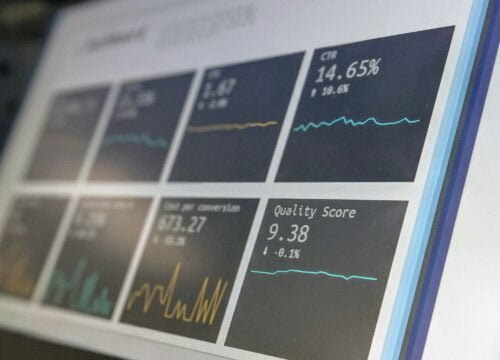In the realm of business, accurately predicting and projecting future sales is a crucial aspect to drive effective decision-making and strategy implementation. This article provides a comprehensive overview of various sales forecasting methods, exploring their strengths, limitations, and applicability in different industries. Understanding these techniques will empower you to make informed business decisions and stay ahead in the competitive market.
Sales Forecasting Methods
Sales forecasting is a crucial aspect of business planning and decision-making. It enables organizations to anticipate future demand, adjust production and inventory levels, and allocate resources effectively. There are several methods available for sales forecasting, each with its own advantages and disadvantages. In this article, we will explore some of the most commonly used sales forecasting methods, including time series analysis, moving averages, exponential smoothing, regression analysis, market research, the Delphi method, intuitive judgment, pipeline analysis, seasonality analysis, and trend analysis.
Time Series Analysis
Definition
Time series analysis is a statistical method that involves analyzing historical sales data to identify patterns and trends over time. It is based on the concept that past sales data can be used to predict future sales performance.
Usage
Time series analysis is typically used when there is a sufficient amount of historical data available. It can be applied to both short-term and long-term sales forecasting and is suitable for products or services with stable demand patterns.
Advantages
One of the key advantages of time series analysis is its simplicity. It does not require complex mathematical models or external data sources. Additionally, it can provide accurate forecasts for products or services with stable demand patterns.
Disadvantages
However, time series analysis may not be suitable for products or services with irregular or seasonal demand patterns. It also assumes that historical trends will continue in the future, which may not always be the case.

Moving Averages
Definition
Moving averages is a sales forecasting method that calculates the average of a specific number of past sales data points to forecast future sales. It smooths out fluctuations in sales data and highlights underlying trends.
Types
There are different types of moving averages, including simple moving averages (SMA) and weighted moving averages (WMA). Simple moving averages assign equal weights to each data point, while weighted moving averages assign different weights based on their relevance or significance.
Calculation
To calculate a simple moving average, you add up the sales data points for the specified period and divide the sum by the number of data points. For example, to calculate a 3-month simple moving average, you add up the sales for the previous three months and divide the sum by three.
Advantages
Moving averages can provide a smoothed representation of sales data and eliminate short-term fluctuations. They are particularly useful for identifying trends and making medium-term forecasts.
Disadvantages
However, moving averages may not capture sudden changes or spikes in sales, as they give equal weight to all data points. They also require a specific number of past data points, which can limit their accuracy if there are significant changes in demand patterns.
Exponential Smoothing
Definition
Exponential smoothing is a sales forecasting method that assigns exponentially decreasing weights to past sales data points. It places more emphasis on recent data while gradually reducing the influence of older data.
Usage
Exponential smoothing is widely used for short-term forecasting, especially when there is a need to quickly adapt to changing market conditions. It is effective for products or services with moderate to high demand volatility.
Advantages
One of the main advantages of exponential smoothing is its simplicity. It requires minimal mathematical calculations and can generate accurate forecasts even with limited historical data. It also responds quickly to changes in demand patterns.
Disadvantages
However, exponential smoothing may not be suitable for products or services with highly irregular or seasonal demand patterns. It assumes a continuous and gradual change in demand and may not capture sudden shifts or spikes in sales.

Regression Analysis
Definition
Regression analysis is a statistical method that examines the relationship between a dependent variable, such as sales, and one or more independent variables, such as advertising expenditure or economic indicators. It uses historical data to develop a mathematical model that can be used to forecast future sales based on the values of the independent variables.
Usage
Regression analysis is commonly used to forecast sales in situations where there are multiple factors that influence demand. It can provide insights into the impact of these factors and help determine which ones are most significant in the sales forecast.
Advantages
One of the key advantages of regression analysis is its ability to account for multiple factors that influence sales. It can provide a more accurate forecast by considering the relationship between the dependent and independent variables.
Disadvantages
However, regression analysis requires a significant amount of historical data and assumes a linear relationship between the dependent and independent variables. It may not capture non-linear or complex relationships, and the accuracy of the forecast is highly dependent on the quality and relevance of the independent variables.
Market Research
Definition
Market research is a sales forecasting method that involves gathering data from customers, competitors, and other external sources to identify market trends, customer preferences, and potential demand. It uses various research techniques, such as surveys, focus groups, and interviews, to collect and analyze data.
Methods
There are several methods of conducting market research, including primary research and secondary research. Primary research involves collecting data directly from customers or potential customers, while secondary research involves analyzing existing data and information from external sources, such as market reports and industry publications.
Advantages
Market research provides valuable insights into customer behavior, preferences, and buying patterns. It can help identify emerging market trends, new customer segments, and potential opportunities. Market research can also provide qualitative and quantitative data that can be used to develop sales forecasts.
Disadvantages
However, market research can be time-consuming and expensive. It requires careful planning, execution, and analysis to ensure the reliability and validity of the data. Market research findings may also be influenced by factors such as sample size, selection bias, and the accuracy of respondents’ self-reporting.

Delphi Method
Definition
The Delphi method is a sales forecasting technique that involves collecting opinions and judgments from a panel of experts or stakeholders. It is based on the principle that collective wisdom can lead to more accurate forecasts than relying on a single individual’s judgment.
Process
The Delphi method typically involves several rounds of questionnaires or surveys, where experts provide their opinions on sales forecasts. The responses are collected and summarized, and then the experts are provided with the collective feedback anonymously. This iterative process continues until a consensus or convergence is reached.
Advantages
The Delphi method can harness the knowledge and expertise of multiple individuals, providing a broader perspective on sales forecasts. It can also help mitigate individual biases and overcome limitations associated with relying on a single judgment.
Disadvantages
However, the Delphi method can be time-consuming, especially if there are multiple rounds of iterations. It also relies on the accuracy and reliability of the experts’ opinions, which can vary based on their knowledge, experience, and personal biases.
Intuitive Judgment
Definition
Intuitive judgment is a sales forecasting method that relies on the experience, intuition, and subjective judgment of individuals involved in the forecasting process. It involves using one’s own knowledge, instincts, and expertise to estimate future sales.
Usage
Intuitive judgment is often used when there is limited historical data or when other forecasting methods are not applicable. It can be particularly useful in situations where there are unique or unprecedented market conditions.
Advantages
One of the main advantages of intuitive judgment is its flexibility and adaptability. It can quickly respond to changes in market dynamics and incorporate qualitative factors that may not be captured by quantitative forecasting methods. Intuitive judgment also allows for a human element in the forecasting process.
Disadvantages
However, intuitive judgment may lack objectivity and can be highly subjective. It is susceptible to individual biases, emotions, and cognitive limitations. The accuracy of intuitive judgment forecasts may vary greatly depending on the expertise and experience of the individuals involved.

Pipeline Analysis
Definition
Pipeline analysis is a sales forecasting method that involves analyzing the sales pipeline or the various stages of the sales process, from lead generation to customer acquisition. It focuses on assessing the quantity and quality of leads and prospects in each stage and projects the conversion rates and sales outcomes based on historical data.
Usage
Pipeline analysis is particularly relevant in industries with longer sales cycles or complex buying processes. It helps organizations understand the efficiency and effectiveness of their sales pipeline and allocate resources accordingly.
Advantages
Pipeline analysis provides insights into the health and performance of the sales pipeline and helps identify bottlenecks, weak points, and opportunities for improvement. It can provide a more accurate forecast by considering the progression of leads through the sales stages.
Disadvantages
However, pipeline analysis relies heavily on historical data and assumes that the future behavior of the sales pipeline will follow the same patterns. It may not account for external factors or changes in market conditions that can impact conversion rates or sales outcomes.
Trend Analysis
Definition
Trend analysis is a sales forecasting method that involves identifying and analyzing long-term patterns and trends in sales data. It examines the direction and magnitude of changes over time to predict future sales performance.
Usage
Trend analysis is particularly useful for long-term forecasting and strategic planning. It can help organizations anticipate shifts in market demand, identify emerging trends or changing customer preferences, and align their business strategies accordingly.
Advantages
One of the main advantages of trend analysis is its ability to capture long-term changes in sales patterns. It can provide valuable insights into market dynamics and help organizations make informed decisions about product development, marketing strategies, and resource allocation.
Disadvantages
However, trend analysis relies on historical data and assumes that the future behavior will follow the same trends. It may not account for sudden changes or disruptions in the market or external factors that can significantly impact sales performance.
In conclusion, sales forecasting methods play a crucial role in enabling organizations to make informed decisions about future demand and resource allocation. Each method has its own advantages and disadvantages, and the choice of method depends on various factors such as data availability, demand patterns, and the specific nature of the business. By combining multiple methods and considering qualitative and quantitative factors, organizations can develop more accurate and robust sales forecasts to guide their strategic planning and decision-making processes.

